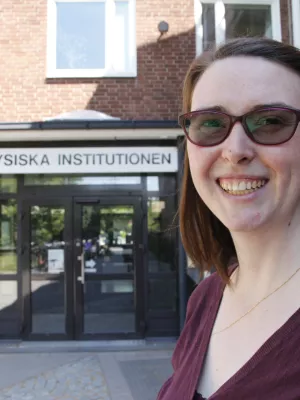
Hannah Herde
Interests: Higgs physics • dark matter searches • solid state tracking detectors • track reconstruction • active teaching methods • digital art • improv

Photon-rejection power of the Light Dark Matter eXperiment in an 8 GeV beam
Author
Summary, in English
The Light Dark Matter eXperiment (LDMX) is an electron-beam fixed-target experiment designed to achieve comprehensive model independent sensitivity to dark matter particles in the sub-GeV mass region. An upgrade to the LCLS-II accelerator will increase the beam energy available to LDMX from 4 to 8 GeV. Using detailed GEANT4-based simulations, we investigate the effect of the increased beam energy on the capabilities to separate signal and background, and demonstrate that the veto methodology developed for 4 GeV successfully rejects photon-induced backgrounds for at least 2 × 1014 electrons on target at 8 GeV. [Figure not available: see fulltext.]
Department/s
- Particle and nuclear physics
- Department of Physics
- Nuclear physics
Publishing year
2023-12
Language
English
Publication/Series
Journal of High Energy Physics
Volume
2023
Issue
12
Document type
Journal article
Publisher
Springer
Topic
- Subatomic Physics
Keywords
- Beyond Standard Model
- Dark Matter
- Fixed Target Experiments
Status
Published
ISBN/ISSN/Other
- ISSN: 1029-8479

